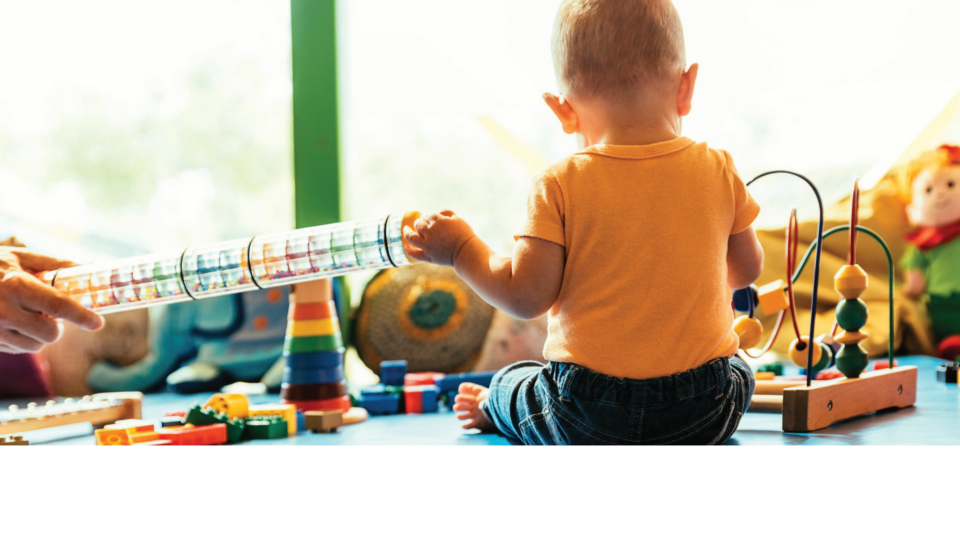For parents who have a child with autism, like Heather Haley, it can go like this:
Heather and her son, Peter, were attending an autism preschool where he received occupational therapy. It’s quite common for kids to run toward the swing set during play time or recess and go soaring on their tummies because it’s just plain fun. Not many parents would think twice about it. In Haley’s son Peter’s case, that was his preference rather than sitting upright the “correct” way, and for kids who have autism, swinging is a big part of OT, she says.
“His therapists would comment about how he preferred to swing on his stomach because he had a weak core,” Haley says. “The ideal would be for him to be sitting upright to swing. At school during conferences, the teachers were telling me that Peter’s biggest obstacles to progress were motor planning issues and his general sense of body awareness. They also would comment that having a weak core made it hard for him to sit and pay attention in the classroom.”
It wasn’t then that she realized it was physical therapy that her son needed; it was the moment when she was filling out a questionnaire to prepare for a consultation with her doctor.
“The form asked, ‘Does your child have motor issues?’ Which I answered with a resounding, ‘Yes.’ Then it asked if your child is getting physical therapy for their motor issues. That’s when the light bulb went on,” she says.
Can Your Child Benefit From PT?
Having the “aha” moment that your child needs PT doesn’t exactly happen overnight. You may think that they are just being a kid or this too shall pass. So how do you know? One way is by paying attention to milestones that may not be met and asking your doctor, just to be safe. With some trial and error, there are ways to know if your kid is in need of a PT consultation.
Puja Gaitonde, physical therapist and founder of Big Blue Canopy, says you can detect if your child may need PT as early as babyhood.
“If the baby is having difficulty holding their head up it may indicate decreased tone, or if your child feels floppy when changing their diaper or carrying them,” she says. In older kids, low muscle tone or decreased core strength can be a tell-all, says Gaitonde. If you notice your big kid is leaning into the table or needing a backrest/slouching when sitting on a chair for tabletop activities, PT may be in the cards.
“Tone and strength both affect posture,” says Gaitonde. “These kiddos can benefit from strengthening exercises and stretches to help maintain a better posture and decrease the chance of pain or discomfort.” Some other signs to look out for according to Gaitonde include decreased coordination on the playground; inability to go up the steps without assistance; having challenges when participating in group/recreation sports, toe walking that is persistent past age 2 and repeated injuries.
“Most kids will avoid certain activities if they are challenging for them,” she continues. “If the kiddo consistently avoids certain activities it may be a good idea to get the underlying cause evaluated,” says Gaitonde. In Peter’s case, he needed help with core strength and participation in everyday activities. PT helped open the doors to new activities and possibilities for him.
“In physical therapy, they worked on strengthening Peter’s core in playful ways,” says Haley. “Now he sits upright when he swings.”
The best thing you can do as a parent is to encourage your child to overcome new obstacles, set up your home environment for success and praise even the smallest achievements.
Helpful Resources
BIG BLUE CANOPY | bigbluecanopy.com
Offers age-appropriate activity ideas and more.
CONNECTING FOR KIDS | connectingforkids.com
Education and support for families.
CENTERS FOR DISEASE CONTROL AND PREVENTION | cdc.gov
Provides tools to help you navigate physical therapy, early intervention and more.
CINCINNATI CHILDREN’S HOSPITAL AND MEDICAL CENTER | cincinnatichildrens.org
The Occupational Therapy and Physical Therapy (OTPT) division offers specialized and personalized services.





